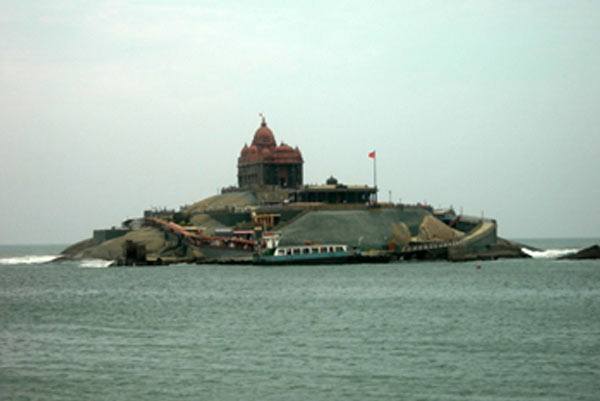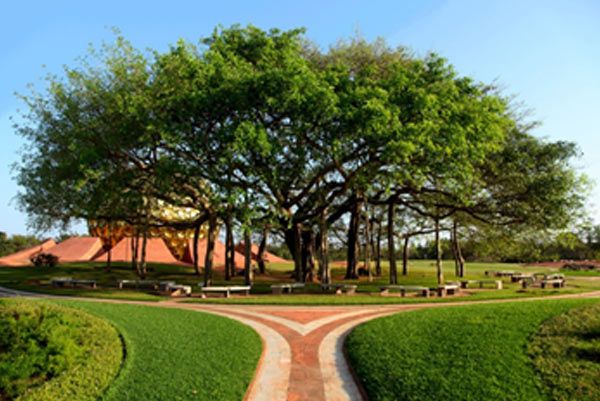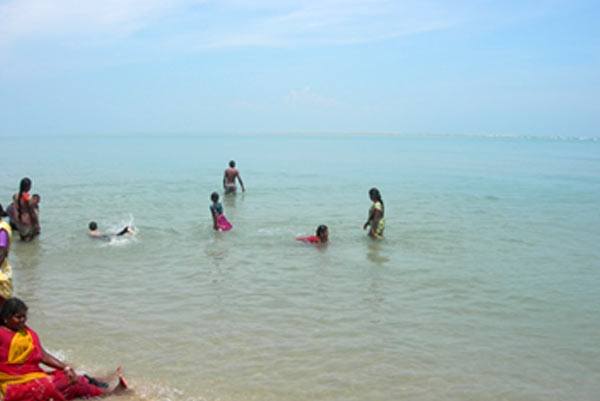About the Itinerary
13 days
This is a rich and unusual itinerary designed in order to discover the most extraordinary places of Tamil Nadu, the south-eastern state of India. One of the four Dravidian states of India, it has had more than 4,000 years of continuous cultural history. Tamil Nadu has some of the most remarkable temple architecture in the country, and a living tradition of music, dance and fine arts. Tamil Nadu is well renowned for its temple towns and heritage sites, hill stations, waterfalls, national parks, local cuisine and the fabulous wildlife and scenic beauty. This route will allow you to cross Tamil Nadu in all is length, from north to the extreme southern point, exploring famous and touristic places together with spectacular destinations not beaten by traditional tour operators. We offer a range of activities as a way of experiencing the uniqueness of South India in its cultural and natural diversity. During this trip you will have the opportunity to admire some of the most famous and renowned temples and architectures of Tamil Nadu and simultaneously being immersed into the cultural and spiritual heritage of its people. Exploring temples will give you the opportunity to access the essence of Indian spiritual heritage. Tamil Nadu is one the most famous Indian states for pilgrimage and attracts Hindu devotees from all over the country. You will be immersed into the south Indian culture, tradition and religiosity in an authentic way, discovering the real essence of this magic and mystic land. During all the route you will have many opportunities to touch with your own hands the work of local actors in favour of vulnerable sectors of Tamil society, in particular unprivileged children. On the way to Mahabalipuram you will visit another interesting project of Dakshinachitra a NGO engaged in the preservation of arts, tradition and architecture of South Asia. From here we will move to discover one of the most sacred cities of India, Thiruvannamalai. In Pondicherry also you can have direct and original exposures to the local reality, visiting the activities of the International community of Auroville, such as renewable energy projects, organic agriculture etc. In Chidambaram you will visit the India only temple dedicated to Nataraja, or Shiva in his Ananda Tandava pose (the Cosmic Dance of bliss) in the cosmic golden hall and the hall of consciousness (Chit Sabha).The Chidambaram temple is also one of few temples in India which follow the Vedic rituals, centred on the performance of the Yagna (fire sacrifice). Assisting at a traditional puja (rituals) in Chidambaram temple will be an interesting way to get a real experience of south Indian religious tradition. The Airavateswara temple of Kumbakonam and the Meenakshi temple in Madurai will be your next visits. From Madurai you will reach the island of Rameswaram, known as the Varanasi of the south while it is considered one of the holiest places in south India. Here you will have the chance to interact with local fishermen and to bath in the “holy” waters of the ocean. A four-wheel vehicle will drop you to Dhanushkodi, the southernmost tip of the island, from where you can admire the famous Adam’s bridge, the place from where according to Hindu mythology the god Rama built a bridge, across the sea to Sri Lanka to rescue his wife Sita from Ravana. Last destination will be Kanyakumari, the southernmost tip of the Indian peninsula located at the confluence of the Bay of Bengal, the Indian ocean and the Arabian Sea. Form here you can enjoy breath-taking sunsets and sunrises before your departure!



JOURNEY OVERVIEW and PROGRAM DETAILS
1° Day: arrival in Chennai
Chennai – Mahabalipuram
Arrival in Chennai (Madras), transfer to Mahabalipuram for some rest in Hotel. visit Dakshinachitra, a center for the living traditions of arts, crafts and architectures of South India. Two hours guided tour visiting all the heritage houses exploring their nooks and corners. Possibility of direct experience of arts and crafts. Overnight in Mahabalipuram.
2° Day visit Mamallapuram
Mahabalipuram
After breakfast full day for the discovery Mahabalipuram. Mamallapuram dates back to the Tamil Pallava dynasty in the 7th-9th century. The structures here, mostly carved straight out of granite, are among the oldest existing examples of Dravidian (South Indian) architecture. In the morning you will have a guided visit of sea Shore temple, five rathas and Thirukadalmallai temple. The Shore temple is the oldest structure in the area, build c. 700 AD. However, unlike Mamallapuram’s other monuments, the Shore Temple is a building (not carved from rock) and the bulk of the current structure is a reconstruction after it was struck by a cyclone. The Five Rathas (Pancha Pandava Rathas), literally chariots, dating from the 7th century are sculptures complemented by some enormous stone animals, including a large elephant. Thirukadalmallai, the temple dedicated to Lord Vishnu, was also built by Pallava King in order to safeguard the sculptures from the ocean. Afternoon transfer to Thiruvannamalai (around 3 hrs). On arrival, check in the hotel and free time to rest in the swimming pool of the resort Overnight in Thiruvannamalai (B, D).
3° Day: transfer to thiruvannamalai
Mamallapuram – Thiruvannamalai
After breakfast , transfer to Thiruvannamalai. this is a place outside the classic tourist itineraries but of great interest. Thiruvannamalai (literally: “the red mountain”) is one of the 5 most important sacred cities of Tamil Nadu and is consecrated to the cult of fire (element representing Lord Shiva), it rises not by chance at the base of the ancient volcano Arunchala. You will visit the main temple of Arunachaleshvara, which dominates the city (every December, on the night of the peninsula, a suggestive Hindu festival is celebrated during which the slopes of the Arunachala volcano are illuminated with great bonfires). The most evocative view of this enormous complex is to go up to the meditation caves of Shri Ramana Maharishi, a great teacher and saint who lived in this place until 1922. Overnight in Thiruvannamalai. (B, D)
4° Day: visit Auroville
Thiruvannamalai – Auroville – Pondicherry
Early morning transfer to Auroville. During the day you will have an introduction to life in Auroville, exploring a variety of sites and the soul of Auroville – Matrimandir. Lunch at visitor centre. After you will visit another project, a women’s empowerment initiative called WELL paper (Women’s Empowerment through Local Livelihood). The project was initiated in 2005 in South India as a tsunami relief effort, to provide alternative livelihood to affected families from the local areas. It gradually developed into a social enterprise model for women from neighbouring villages of Auroville and Pondicherry. The two main goals of WELL Paper are to provide self-empowerment and livelihood for women and to develop and promote products made of recycled materials.
Overnight in Hotel Pondicherry (B/L).
5° Day: discover Pondicherry
Pondicherry
With the waterfront, wide streets, the obvious French cultural and architectural legacy and the popular Ashram, Puducherry (its original name) is a unique Indian city. The previous French colony was founded in the early 18th century as a colonial enclave, and over time the French style was superimposed on the characteristic Indian style. Thanks to this there is a great cultural and architectural richness. A guided tour will show you the major tourist attractions such as the Ashram founded by Sri Aurobindo in 1926 and then entrusted to his disciple ‘La Madre’; the Church of the Sacred Heart of Jesus and the Bharti and Bharthidasan memorial museum. The district of Pondicherry is also the birthplace of some notable personalities such as the poet Subramanya Bharathy and the director M. Night Shyamalan. You will also have free time to visit the city, the beaches and the promenade, which is always kept clean so as not to spoil its fascinating beauty. Overnight in Pondicherry. (C)
Overnight Pondicherry (B).
6° Day: visit Chidambaram
Pondicherry – Chidambaram- Kumbakonam
Departure to Chidambaram. (Only for groups, we will visit an interesting development project of a local NGO called EKTA. The NGO promotes campaigns to end violence against women, facilitates networks for experiential sharing and collective action. It advocates and lobbies for gender sensitive policy changes to further the interest of women and address gender based violence in particular. In particular you will visit the Nambikkai Centre, which host 30 girls, providing them with maximum opportunity to explore their creative skills in different disciplines, sports, dance, music, etc. This Centre also acts as a drop-in centre for women and children in need. Lunch will be prepared by women of a local village). In the afternoon you will visit Chidambaram temple, famous to be the only Indian temple of Shiva Nataraj. After the temple visit to Kumbakonam. On the way visit Gangaikonda Cholapuram temple. The name Gangaikonda Cholapuram means the city of the Chola King who captured the Ganges. This religious village, which served as the capital for nearly 250 years, still holds the remains of the Chola Kingdom and the structures of architectural values. Overnight in Kumbakonam (B).
7° Day: visit Kumbakonam
Kumbakonam – Dharasuram – Kumbakonam
Today you will visit Kumbakonam and Dharasuram village. The village, located 3 km from Kumbakonam, is known for the Airavateswara temple constructed by the Rajaraja Chola II in the 12th century A and is an exquisite symbol of the supremacy of Chola architectural style D. The temple is a recognised UNESCO World Heritage monument. Airavat is the holy White Elephant and the temple is dedicated to the Lord of Airavat. (Only for groups, in the evening performance of Bharathanatyam with traditional vegetarian dinner). Overnight at Kumbakonam (B).
8° Day: visit Tanjavur temple
Kumbakonam – Thanjavur- Madurai
Departure to Thanjavur, visit to Brihadishvara Temple. Thanjavur, otherwise known as Tanjore, is a city of Chola rulers and it gained popularity during the Chola period between 11th and 14th centuries. According to a local legend, Thanjavur derives its name from Tanjan, an asura ruler, who was killed by Lord Vishnu and Sri Anandavalli Amman for devastating the neighbourhood and was granted his last request that the city be named after him. The Great Chola emperor Raja Raja Chola built this famous Brahadeshwara temple or the Big Temple. This temple showcases the Indian architectural brilliance and is a favourite pilgrimage spot for many visitors visiting Tanjore.
After lunch transfer to Madurai. Afternoon visit and sightseeing Madurai: Sri Meenakshi Temple. Palace, Alagar Koil. Madurai is a temple town of India which attracts people from several different part of the country for religious purposes. The enormous temple complex is dedicated to Shiva, known here as Sundareshvara and his consort Parvati or Meenakshi.
Overnight in Madurai (B).
9° Day: transfer to Rameswaram
Madurai- Rameswaram
If you wish you can have an early morning visit to Meenakshi temple. After breakfast transfer to Rameswaram, a small island in the Gulf of Mannar, known as one of the major pilgrim centres. Rameswaram is a holy place because Sri Rama, on his return from Sri Lanka, offered his thanks to Lord Shiva and performed pooja to wash away his sin in killing the Demon King, Ravana.
You will visit the Ramanathaswamy temple, renowned for its magnificent corridors and massive sculptured pillars. The third corridor of Ramanathaswamy temple is the longest one in the world. Possibility of Agni Thirtam, bathing in the holy sea.
Overnight in Rameswaram. (B).
10° Day: visit Daneshkoodi
Rameswaram
Rameswaram is also known for its beautiful and uncontaminated beaches such as Olaikuda, Dhanushkodi and Pamban. The Olaikuda beach is 1 km from the main temple and s engulfed by coral reefs, which makes bathing in the sea safe and enjoyable. In the morning you will visit the ancient fishing village of Dhanushkodi. This place is known of one of the main Tirthas of the island and it is located at the eastern most tip of Rameswaram. Rama used his bow’s (Dhanush) end (Kodi) to break the bridge – Adam’s Bridge (hence the name). This bridge was used for his army to cross over to Lanka for the victorious war against Ravana. Interaction with fisherman. Possibility of bathing in the beautiful see near Adam’s bridge. You will have a traditional lunch prepared in the village of Daneshkoodi by fishermen community.
Overnight in Rameswaram. (B/L).
11° Day: transfer to Kannyakumari
Rameswaram – Kanyakumari
Morning transfer to Kanyakumari. Kanyakumari, formerly known as Cape Comorin and located at the southernmost tip of the Indian peninsula, lies at the confluence of the Bay of Bengal, the Indian ocean and the Arabian Sea. Kanyakumari derives its name from the Goddess Kumari Amman who has a temple dedicated to her on the seashore. According to Hindu legend, Kanya Devi, an avatar of Goddess Parvati, was to marry Lord Shiva, but as he failed to show up on his wedding day, the rice and other grain meant for the wedding feast remained uncooked. As the legend goes, the uncooked grain turned into stones as time went by. It is believed that the small stones on the seashore today, are indeed grains of the wedding that was never solemnized. Visit the Vivekananda Rock Memorial and other important places.
Overnight in Kanyakumari (B).
12° Day: relax Kovalam beach
Kanyakumari-Kovalam beach
After breakfast transfer to Kovalam beach in Kerala (2,5 hours drive). Free day to relax on the beach and do some shopping in the typical Indian craftshops.
13° Day: depart from Trivandrum
Kovalam beach-Trivandrum airport
Transfer to Trivandrum for your international flight.
ACTIVITIES
- visit the beautiful and majestic temples of Tamil Nadu
- visit children projects in Chennai and Chidambaram
- explore traditional architecture, crafts and culture of South India in Dakshinachitra
- visit the sacred city of Thiruvannamalai and the meditation caves of master Ramana Maharshi
- experience the International community and sustainable projects of Auroville
- visit the ex-French colony of Pondicherry
- boat trip in Pichavaram Mangroves forest
- participate at the Arati puja in Nataraja temple of Chidambaram
- experience a Bharathanatyam dance performance in Kumbakonam
- interaction with traditional fishing communities in Rameswaram
- bath in the “holy” and transparent sea of Ramesharam and Daneshkoodi
- walk on beautiful and deserted beaches of Manapad
- boat ride to the Vivekananda Memorial of Kanyakumari
- relax on the beach of the seaside town of Kovalam
- historical and archaeological sites sightseen
SOCIAL & ENVIRONMENTAL IMPACT
All the itinerary has been designed to promote direct or indirect benefits for local communities, environment and cultural heritages. When possible we have selected specific accommodations for social and environmental issues.
In particular INDeco resorts have been created with a specific intention to serve as a source of funding for social, cultural and economic development of rural areas where the hotels are located. The INDeco hotel aims at restoring historical properties to preserve and value India’s tradition and cultural heritages. While restoring heritages INDeco has been able to transform hospitality from mere shelter to unique experiences, where to showcase authentic India and promote equal employment opportunities for rural youth! There are many activities and expositions during the tour that will allow you to access the culture and social interventions in favor of marginalized communities. On the way to Mahabalipuram we will visit Dakshinachitra, an NGO working for the preservation of traditional arts and craft. Dakshinachitra (which literally means “a picture of the south”) is an exciting cross cultural living museum of art, architecture, lifestyles, crafts and performing arts of South India. Here you can explore 17 heritage houses, amble along recreated streetscapes, explore contextual exhibitions, interact with typical village artisans and witness folk performances set in an authentic ambience. In Pondicherry you can explore the International city of Auroville, having a direct exposure to interesting and innovative sustainable development projects. From organic agriculture to women’s empowerment initiative called WELL paper (Women’s Empowerment through Local Livelihood) and renewable energy projects. If you wish to experience organic farming through the help of Auroville team members. Near Chidambaram you will discover the activities of another local NGO called EKTA, working in support of women ‘s rights and empowerment. The visit to Nambikai center will give you the possibility to interact with girl studying there. Visiting a local village will get to know traditional prawn catchers and their livelihoods.
In Rameswaram a group of women will host us for a traditional lunch based on “meen curry” (fish curry) in the fishing village of Daneshkoodi, so you will have a chance to understand lifestyle of traditional fisherman.
Moreover, your contribution of 70 euros will support development projects in favor of one of the most marginalized tribal communities of India. Tribal communities are still at the margin of Indian society and for this reason two main projects: 1) to conserve biological and cultural diversity; 2) to promote the formal education of children belonging to Kattunayakan community of the Nilgiri district of Tamil Nadu.
TIPS BEFORE DEPARTURE
A conscious approach to travel requires a considerable capacity and willingness to adapt and adjust to the local environment and culture. If you wish to travel with us we request you to be open enough to experience local culture, religious and traditions without bias and pre-conceived ideas you might have before the departure and which belong to our Western cultural way of thinking. Exploring with fresh eyes, with patience and openness, you will be able to access the real essence of South Indian cultural heritages through the places and people you are going to meet; if you are ready to do this effort you will really enjoy the beauty of a completely different cultural tradition, the extraordinary of the nature, the solemnity of Dravidian temples, the holiness of the waters of countless rivers and oceans that flow through this magic land.
You are advised to follow a certain dress code. There are basically two reasons why it is recommended to be careful about what clothes you wear while traveling to Kerala. The first reason is to prevent you from hurting the sentiments of the local people and second, to protect you from the varied weather conditions prevailing in seasons. One more thing to keep in mind is mosquitoes…it is advised to keep your arms and legs covered because it provides protection (however, don’t forget to bring with you mosquito nets and repellents, especially for backwaters cruises).
It is advised that you get onto India’s time zone as soon as you leave home and try to eat and sleep on Indian time. Also, if you reach India early in the day, try to stay awake – this will help the body’s internal clock to reset.
Hotels
We selected beautiful and traditional heritages resorts with all the facilities throughout the tour. However, all the resorts have been selected carefully according to criteria of social and environmental impacts.
Transport
Private vehicles o mini-buses with AC according to the number of participants for all the itinerary from Chennai to Trivandrum.
When to go
The climate in most of Tamil Nadu is essentially tropical. It is hottest in April, May, June with the temperature going over 40°C. It is coolest in December, January, but not really cold anywhere except in the hill stations (Ooty, Kodaikkanal, Yercaud), where night temperatures may drop below 5°C. The monsoons (rainy season) arrive in October and continue till the end of December. The best time to visit is between July-September and January-March; great occasion to visit Tamil Nadu is January during the festival of Pongal!
REQUEST A QUOTE
Tamil Nadu the land of the temples

